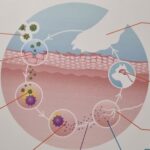About 1 in 3 cats will Chronic kidney disease (CKD) in their lifetime. Whilst the kidneys damage can be caused by infections, toxins and immune mediated problems, the most common form of CKD will be related to an ageing kidney.
Each kidney is made up of nephrons which are like micro filters which help remove the toxin from the body. Humans have about 1 million nephrons per kidney, dogs about 400,000, and cats only 200,000 nephrons per kidney. It is therefore understandable why more cats are affected by kidney disease than dogs.
Common signs include
- Increased drinking
- Urinating more frequently
- Reduced appetite
- Weight loss
- Dehydration
CKD is a progressive disease and once the nephrons are damaged it is irreversible. Early detection is therefore the key as there are several ways of managing and slowing down the progression of the disease
It is often why we suggest cats over the age of 7 years, should have a general blood and urine test done so as to pick up the early signs of kidney damage before any changes at home are noted.
There are several ways in which we can help pets with CKD include. The main one is managing their diet. We recommend a therapeutic kidney diet which reduced the stress and work load of the kidney by restricting ingredients such as salt and phosphorus which can cause more kidney damage.
We will also recommend monitoring blood pressure and hydration status as high blood pressure and dehydration will also cause further kidney damage. For example, senior cats often love lazing by the heater, but can easily dehydrate if they do not drink enough.
When the kidney disease gets worse medication is also often needed to help the kidney function better.
It is not possible to predict the progression of CKD after a cat has been diagnosed. But we do know that those that have some form of management live longer.



